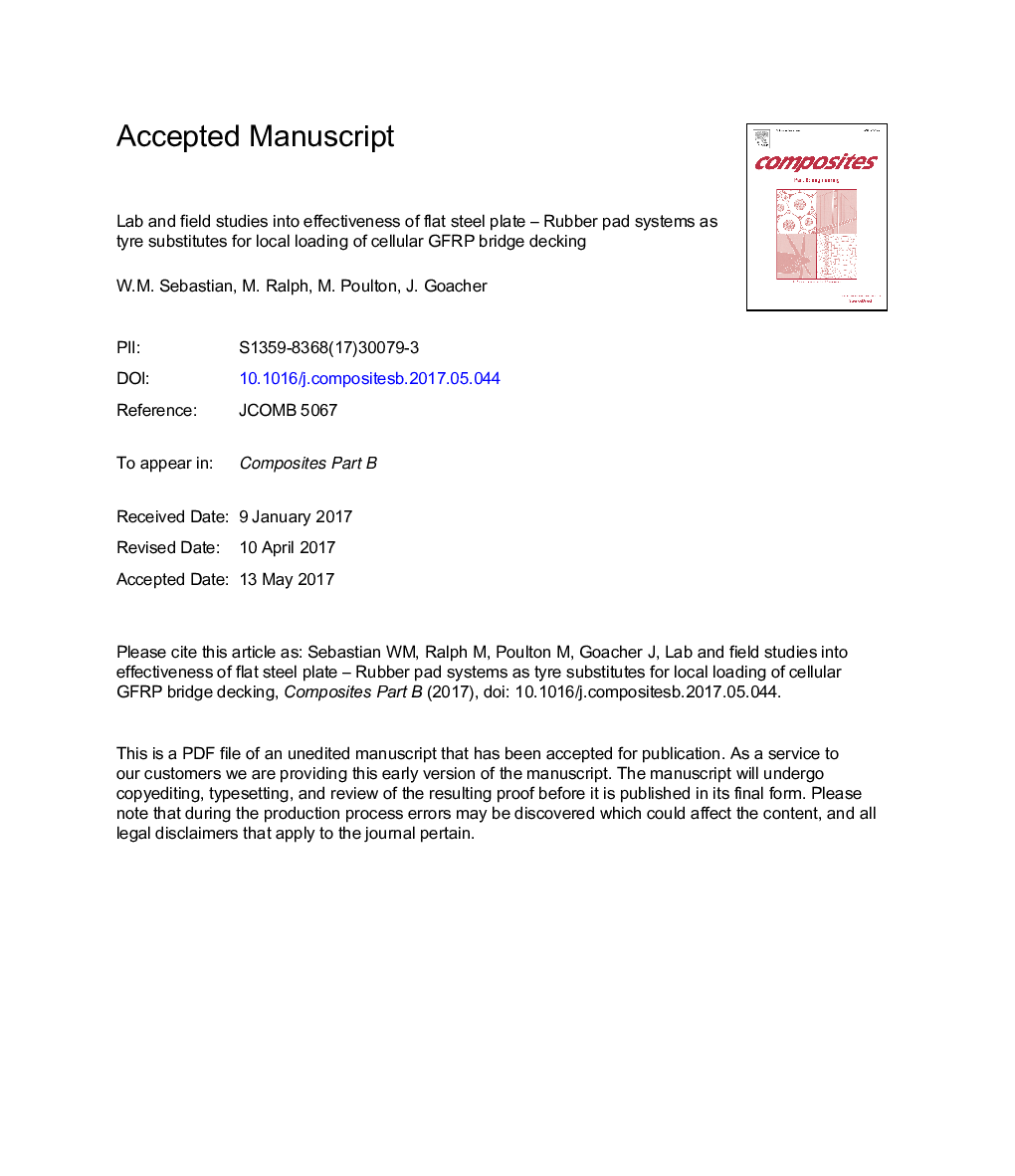| Article ID | Journal | Published Year | Pages | File Type |
|---|---|---|---|---|
| 5021578 | Composites Part B: Engineering | 2017 | 57 Pages |
Abstract
The current preferred approach to assessing the local tyre load fatigue performance of cellular FRP bridge decks entails cyclic loading of the decks using flat, rectangular steel plates faced with rubber pads. Significantly, the plate-pad details are taken from standards developed for concrete and steel decks. For this approach to succeed with FRP decking, the local load distribution on the deck from the plate-pad system must mimic that from a tyre. To that end, this paper presents contact pressure distributions (CPDs, recorded using an electronic mat pressure sensor) exerted on a FRP deck at different loads by plate-pad systems in lab tests and by lorry tyres at different inflation pressures in field tests. The field data reveal that as the tyre load increased, the tyre-deck contact patch evolved from a circle to an ellipse and then to a square, causing the contact load profile to morph from a triangle to a trapezium. This changing geometry of the tyre-deck CPD led to distinctly nonlinear variations, with the tyre load, of the local surface strains recorded from the deck. Empirical definitions of these tyre-deck load profiles are proposed, based partly on use of the field data in FE analysis. Across the spectrum of realistic tyre loads and inflation pressures investigated, the plate-pad systems (particularly with rubber pads) induced far less onerous CPDs on and local strain responses from the deck than did the tyres. In closing, the paper identifies the need to also quantify fibre waviness, in a move towards fatigue performance prediction for FRP decks.
Related Topics
Physical Sciences and Engineering
Engineering
Engineering (General)
Authors
W.M. Sebastian, M. Ralph, M. Poulton, J. Goacher,
